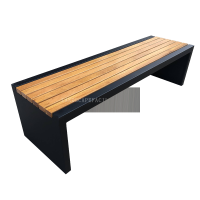Welcome to the website for landscape facilities products and knowledge.
What are the best practices for ensuring proper ventilation around a landscape bar counter with cooking features?
Integrating cooking features into a landscape bar counter transforms an ordinary backyard into a premier entertainment hub. However, this fusion of mixology and culinary arts introduces a critical challenge: managing smoke, grease, and heat. Proper ventilation is not merely an accessory; it is the cornerstone of safety, comfort, and enjoyment. Ensuring optimal airflow prevents the accumulation of harmful gases, controls odors, and protects both guests and surrounding structures. Without a strategic approach to ventilation, even the most beautifully designed outdoor kitchen bar can become an unpleasant and hazardous environment. This guide outlines the essential best practices for achieving a perfectly ventilated outdoor cooking and serving space.
The single most important component of any outdoor cooking bar is a high-performance exhaust hood. Unlike indoor models, outdoor hoods must be constructed from materials that resist corrosion, such as 304-grade stainless steel or powder-coated aluminum. The size and power of the hood are paramount; it should completely cover the cooking surface and extend slightly beyond it to effectively capture rising contaminants. For a typical grill or cooktop, a hood with a minimum airflow rating of 600-900 CFM (Cubic Feet per Minute) is recommended. The hood should be installed at the manufacturer's specified height above the appliance, usually between 30 and 36 inches, to maximize capture efficiency without impeding the cook's line of sight.
Effective ventilation extends beyond just the hood. It is a system reliant on balanced airflow. While the exhaust hood removes polluted air, it must be replaced with fresh air to prevent negative pressure, which can draw smoke back into the area. This is achieved through natural or mechanical make-up air. Strategically positioning the bar counter to take advantage of prevailing winds can significantly aid in dispersing smoke. For enclosed or semi-enclosed structures, such as a pergola with a solid roof or a screened-in area, installing a dedicated make-up air vent or a lower-powered supply fan opposite the hood is a crucial best practice. This creates a cross-draft that pushes contaminants toward and into the exhaust system.
The choice and placement of appliances directly impact ventilation needs. Opt for outdoor-rated appliances designed to operate efficiently in open-air conditions. Positioning the primary cooking feature, such as a grill or griddle, as far away from seating areas as practical is advised, with the exhaust hood acting as a barrier between the heat source and your guests. Furthermore, selecting a bar counter design with an open base or incorporating decorative grilles can prevent heat buildup under the counter, protecting cabinetry and stored items while promoting natural convection currents that aid overall ventilation.
Rigorous adherence to safety codes is a non-negotiable best practice. Always maintain proper clearance—typically 12 inches or more—between any cooking surface and combustible materials like wood, vinyl siding, or fabric shades. Installing an automatic fire suppression system under the hood provides an critical layer of protection. For gas appliances, ensuring all connections are leak-free and that the area is well-ventilated to prevent dangerous gas accumulation is essential. Regular maintenance, including frequently cleaning grease traps, filters, and fan blades, is vital to maintain peak performance and eliminate a significant fire hazard.
Finally, seamlessly integrating these functional elements into the landscape design ensures the space remains aesthetically pleasing. Ductwork can often be concealed within decorative columns or chimneys that complement the overall theme. Choosing a hood design that matches the style of the bar, whether it's a sleek modern insert or a rustic chimney-style hood, maintains visual cohesion. The ultimate goal is to create an outdoor living area where the joy of cooking and socializing is enhanced by a clean, safe, and comfortable environment, free from the distractions of smoke and excessive heat.
Related search:

Recommendation
Modern Stainless Steel Begonia Wood Park Chair Outdoor Courtyard Leisure Sun Protection Bench Long Seat